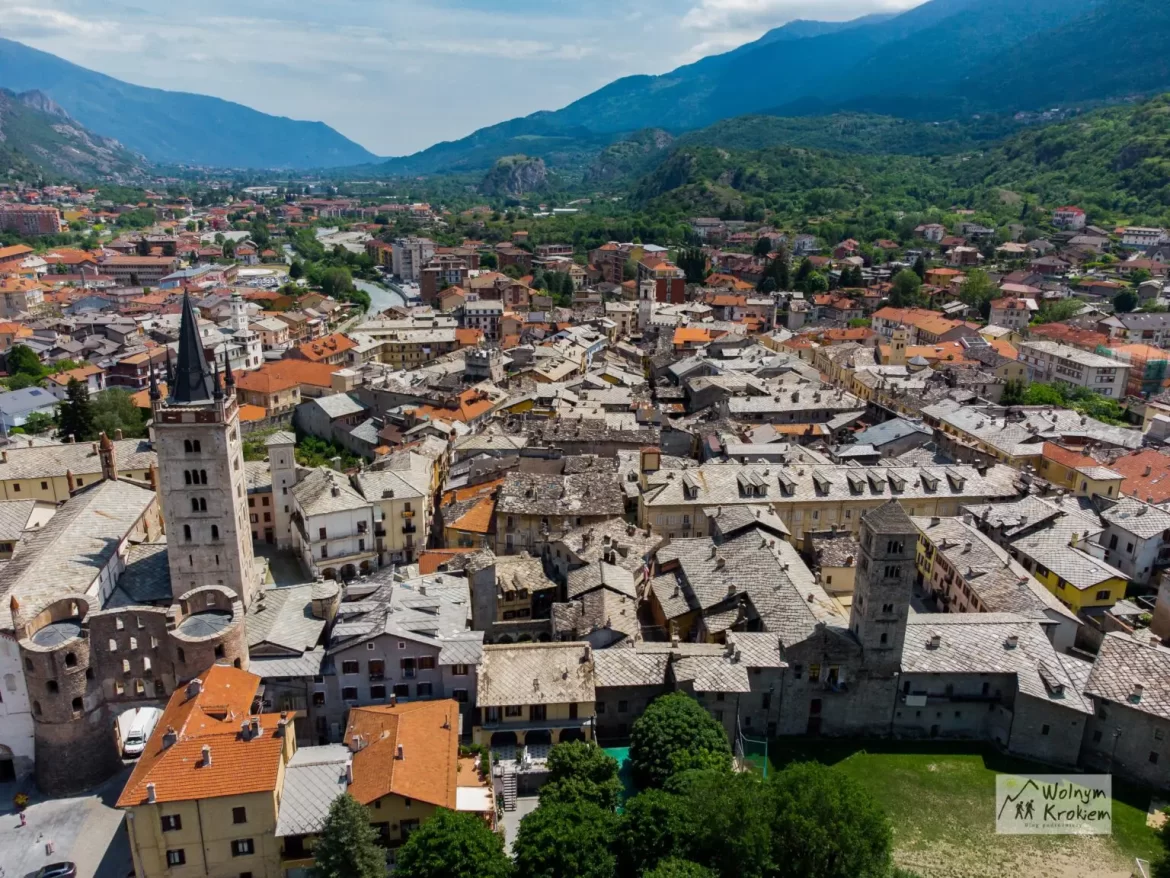During a three-day trip to Turin in Italy, we wanted to go somewhere by train and, checking the available routes, we decided to go where we were most passionate about – the mountains. This is how we came to Susa, a town in the middle of the Alps, about one hour from Turin (by train). We went there on spec, because we couldn’t find much information about the town, but we took a chance because of two things.
Firstly, we are going there by train, which means boys will be very happy. Secondly, it is, after all, an Italian town surrounded by the beautiful Alps! So what could possibly go wrong? And really, Susa suprised us so much.
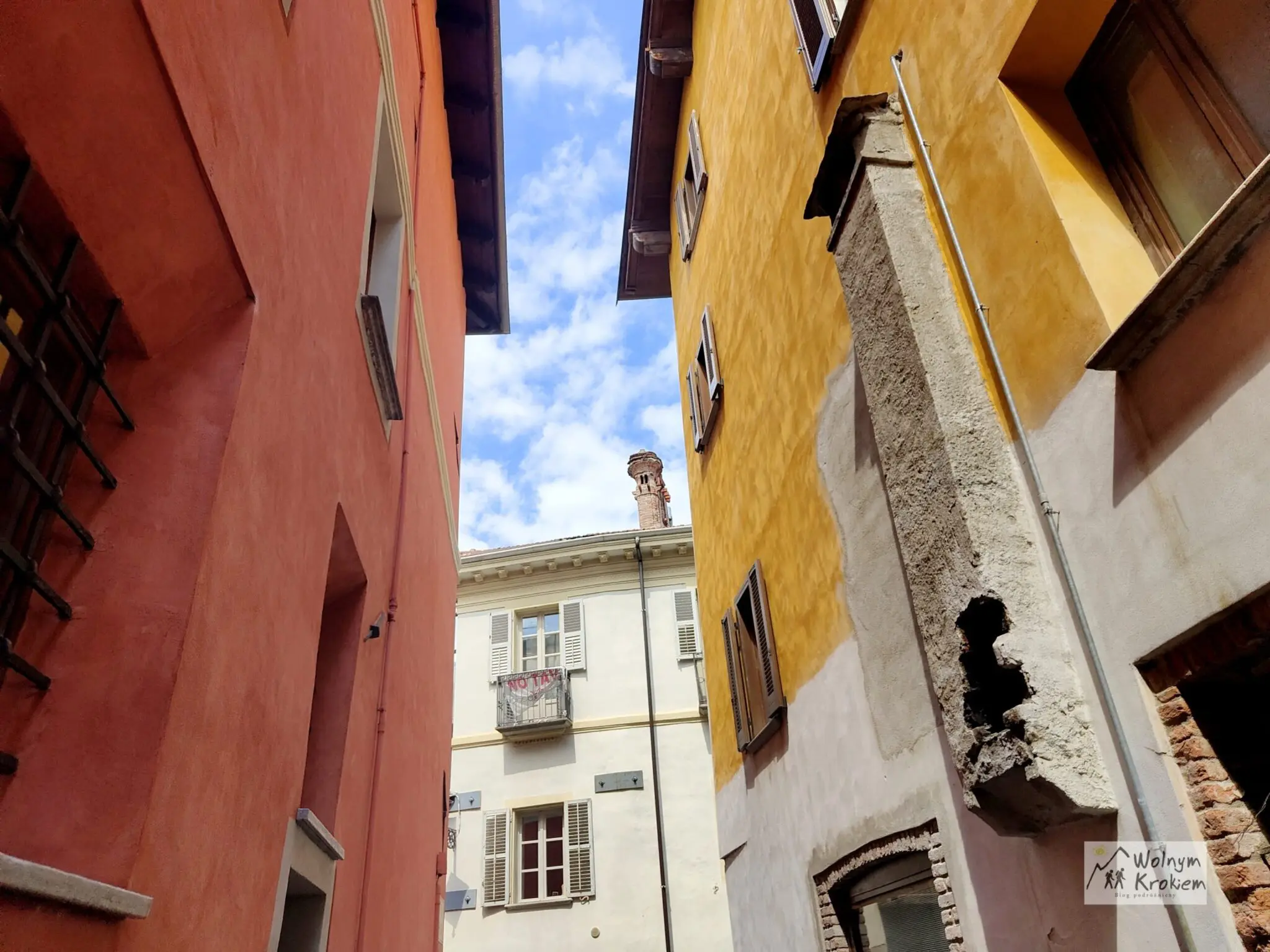
Departure by train from Turin to the mountain town of Susa surrounded by the Alps
Turin’s central station is called Porta Nouva and is located between Via Paolo Sacchi and Via Nizza. It was located just 300 metres from our rented apartment, so we had very good access to it. The location of the accommodation here was therefore a very good choice and allowed us to get around Turin efficiently.
The train from Turin Central Station leaves to Susa every hour (in our case it was 10:45, 11:45, 12:45 etc.) and it is a line that only runs between Turin and Susa, so there is no fear of going further by accident. You get on the train at the first station and get off at the last station – it’s impossible to get lost. A ticket for one adult costed us €5.50, while children under 4 ride for free and you don’t need to buy 'zero’ tickets for them. As for news that a tourist may not be aware of, before boarding the train, the ticket must be punched at the ticket machine located on the platform (a small green box similar to the ticket machines we know from public transport). If you want to check the exact timetable of train departures and ticket prices, visit the official Trenitalia website for train travel – https://www.trenitalia.com/en.
We did, however, have a problem with buying tickets. There are a number of ticket machines in the central station which are not very intuitive to use, but you will have to get through this as buying tickets elsewhere is very problematic. The normal ticket office at the station is virtually always crowded and the order of buying tickets is done in the line using numbers. For example, when we arrived half an hour early for a train and wanted to buy a ticket at the normal ticket office, we were given the number 678 and they were currently accepting 613… We also tried to buy a ticket using mobile apps, but unfortunately every Italian app we have downloaded turned out to be a total flop that either didn’t work or jammed at some stage of the order process. So you will most likely be condemned to buy your ticket from a ticket machine, so take it easy, change language to English and take it slow.
Another piece of information is that it is only possible to enter the train with a pram at the beginning of the train. Other entrances to the train are blocked by posts, so if you are travelling with a pushchair, go straight to the start of the train.
As we mentioned earlier, the train line leading to Susa takes about 1 hour and in that time you will be able to enjoy many beautiful views, including famous Sacra di San Michele monastery located on the mountainside. Originally this is where we wanted to go, but we decided that climbing up a steep mountain with a broken arm would not be a very smart idea, so we gave up and just drove to Susa. However, if you have some time and want to see a very interesting attraction, it is worth stopping at the station of S. Ambrogio (Avigliana village) and climb uphill to see this beautiful monastery. Google tells us that the ascent to the monastery and descent to the station is a distance of about 6.3 kilometres, which should take more than a little over two hours.
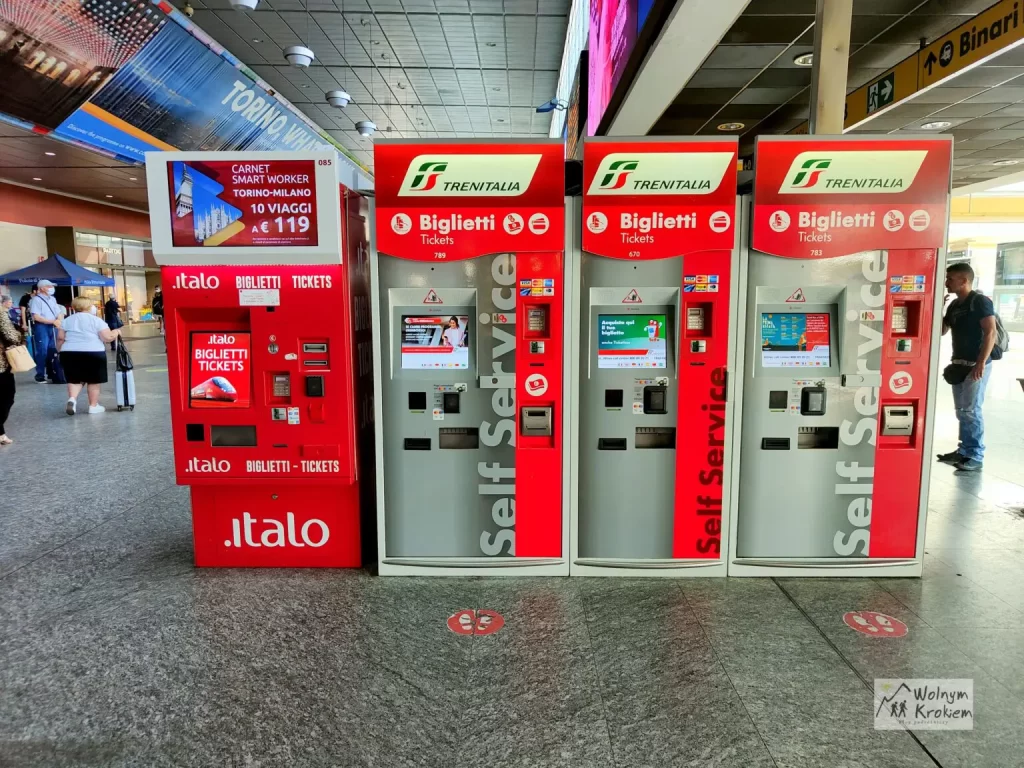
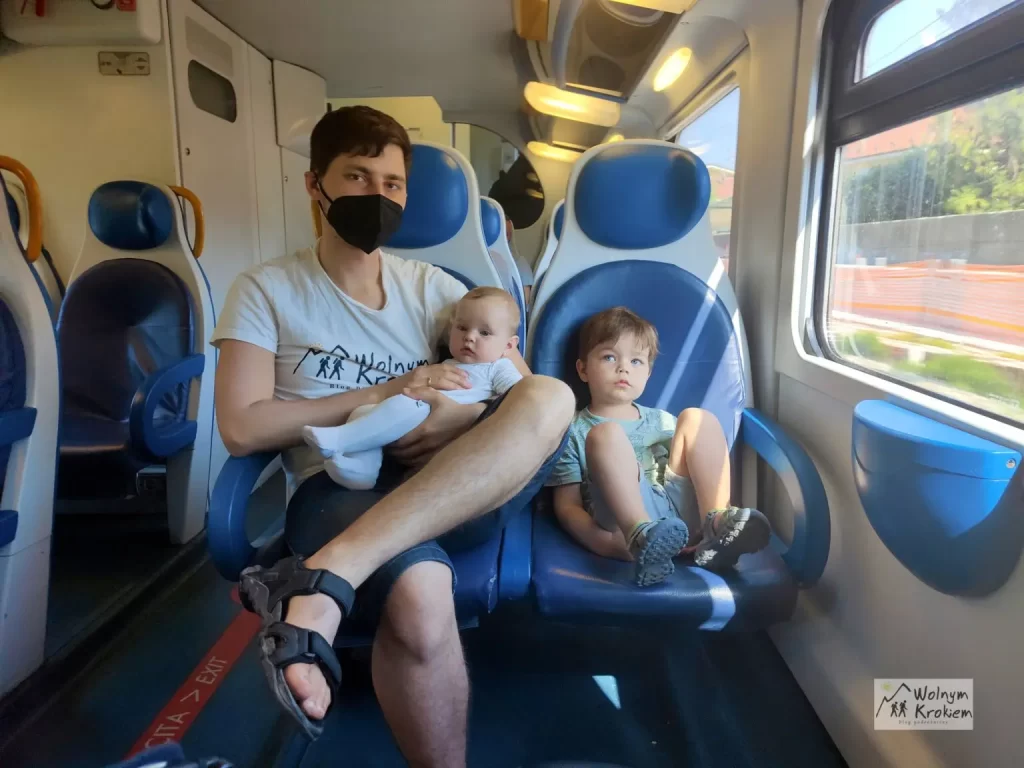
Susa – the former provincial capital city of the Roman Empire Time
The history of the town of Susa goes back a long way, where the first signs of Celtic settlements in the area were detected around 500 BC. However, Susa only gained its splendour during the reign of the Roman Empire, which gave the place a strategic position as the 'Gateway to Italy’ connecting Northern Europe with Rome. Because of its location, Susa was often plundered and pillaged and passed from hand to hand. In the 8th century it was taken over by the Franks, who stabilised the city somewhat and rebuilt the destroyed fortifications. In the 11th century, it became the first land conquered by the Counts of Maurienne. It thus became the capital of the province of Sabaudia and followed the course of this principality to the end. After the unification of Italy, it became part of the province of Turin.
Susa’s history is rich and this can be seen in the old buildings or the many fortifications. Our plan was to take a leisurely tour of Susa with the trolley and to visit the town’s major attractions. To do this, we went to the tourist information point located right next to the train station. The lady who worked there helped us with the route and explained step by step (in English!) which street we had to enter, what we would see and, at the end, she handed us a city map with several brochures describing the history of Susa and information on attractions. Thus equipped, we set off on a little walk that would show us what the city hides.
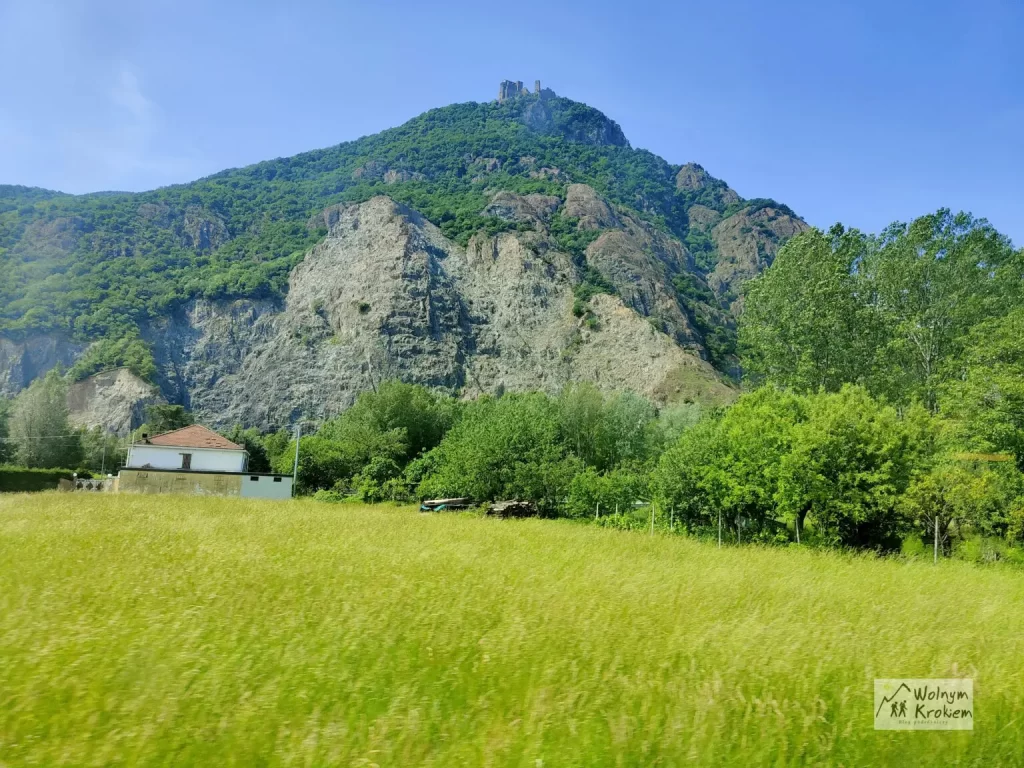
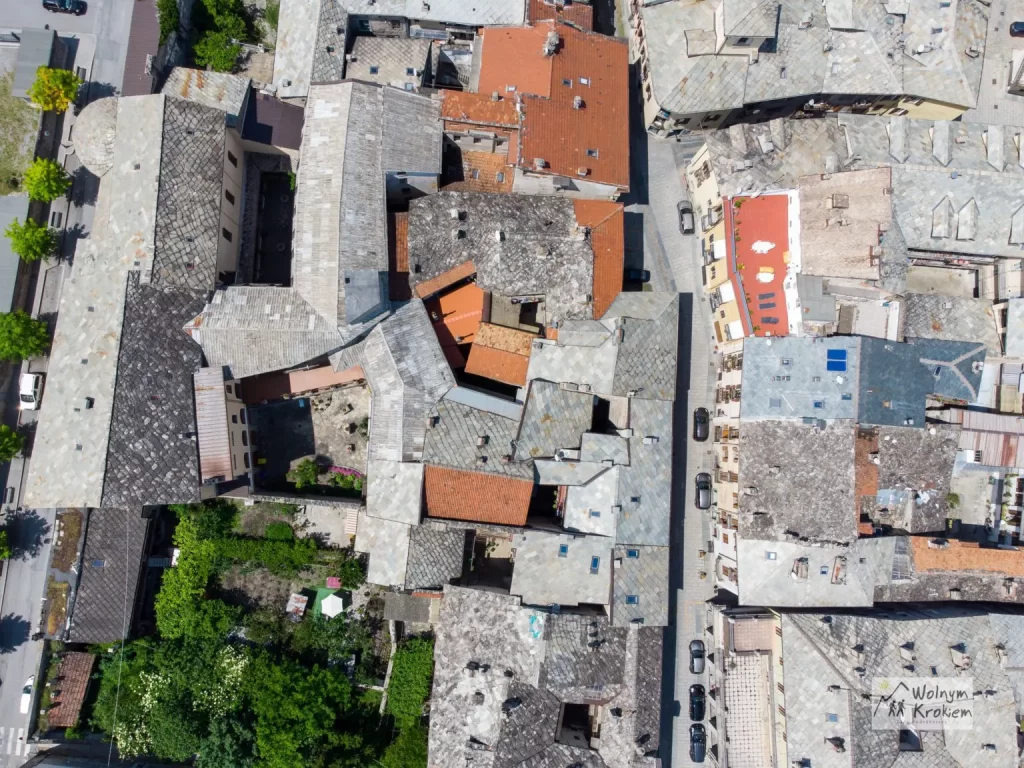
Susa – a city tour that takes you around the city’s main attractions
As we mentioned, on leaving the train station we recommend you go to the tourist information centre. There you will certainly learn some interesting things and get a city map. Then, starting your wanderings in the Italian town of Susa, you will find the town promenade, where many cafes, shops and bakeries are located. We were particularly attracted by the last one, where we bought ourselves provisions (small pizzas, croissants, pastries with Nutella and fruit were a must) and ice cream.
After the energy boost, we continued towards the old town. The first thing that struck us was that it was really calm in Susa. Quiet, no crowds (this could also be due to the fact that we were not in peak tourist season – our trip was in mid-May) and beautiful views of the surrounding Alps. This is the best way to visit! What’s more, Leoś had a lot more freedom of movement here, because in Turin he had to stay very close to us and watch out for crowds of people so that he didn’t get lost, which made us quite tense.
In Susa, he could run around, explore every nook and cranny and get a little further away, which made exploring the town much more fun. We were also calmer and didn’t have to admonish him as much as in crowded Turin.
After visiting the town’s showpiece promenade, just across the Dora Riparia River, we recommend you to go right and walk until you reach the crossing with the town school and turn left. It is there that you will see the city gate (Porta Savoia / Savoy Gate) dating from the 3rd to 4th century. Immediately behind it is the beautiful Gothic-Baroque Cathedral of San Justust. We, however, went towards the park first and had a small picnic there along with our first drone flights in Italy. In Turin, the entire city is covered by a yellow air zone, imposing certain restrictions.
We didn’t want to take any risks and gave up flying in Turin, so in Susa we were able to stretch the propellers of our drone for the first time. The views from it were beautiful! Not only did the historic buildings give the town an atmosphere, but the majesty was complemented by the surrounding peaks of the Western Alps. In the town park, there is still a statue of Julius Caesar, which still stands today as a reminder of the power that the Roman Empire represented to the world.
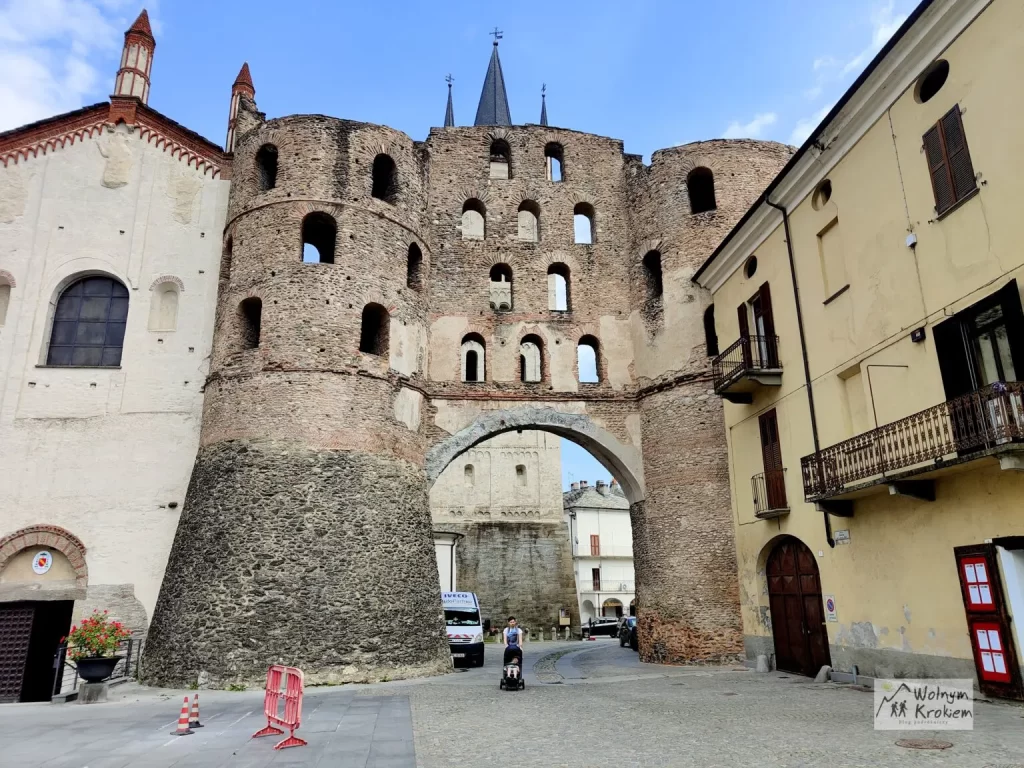
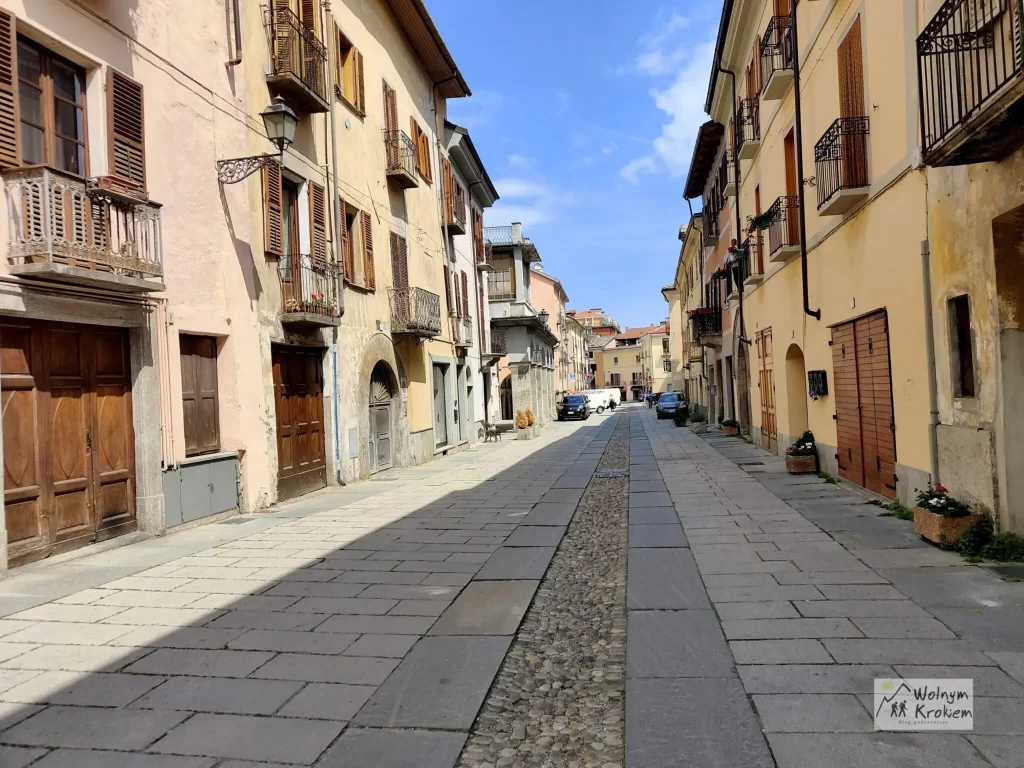
The next interesting place is located just outside the park – the Arch of Augustus, built in 13-8 BC, commemorating the great covenant between Octavian Augustus Caesar (First Roman Ruler) and the king of the Celts. This pact was sealed with the sacred sacrifice of an animal, which can be seen in the fresco decorating the arch.
Another point on Susa that you should visit is the remains of a Roman aqueduct and the remains of a Celtic sacrificial altar. Sometimes we wonder how it was possible that thousands of years ago people were able to build such buildings, creating both practical and aesthetically beautiful constructions. And all this for the glory of the ruling empire. The second miracle, in our opinion, is that a lot of these buildings has been preserved to our times. In spite of wars, battles, plundering, arsoning they still stand and is a proof of the ingenuity and hard work of society.
Between these attractions are Historical Museum (temporarly closed) and the Palace of the Countess Adelaide, who married Oddon Count of Maurienna and Savoy in the 11th century. Moving on, we set off to meet the historic amphitheatre dating back to the 2nd century. To do so, we followed a narrow alleyway flanked on two sides by a wall leading to a small chapel.
Staying in the amphitheatre was perhaps the most spectacular attraction of Susa (for us). As we stood in the middle, the acoustics of the place swept us off our feet! Leoś was more than happy to sing a few songs and of course they were accompanied by „as loud as possible”. So much fun for the child. This was precisely the function that the amphitheatre was supposed to provide for the people of the time. However, the form of entertainment was quite different and was based on bloody gladiatorial combat and the entertainment known as Venationes, which was nothing more than gladiatorial combat with wild animals. These fights usually took place before the main gladiator fights
We then headed towards the old town again to wander a little among the city buildings. We had the return train at 5.09 pm, so we had plenty of time to enjoy the mountainous atmosphere of the town.
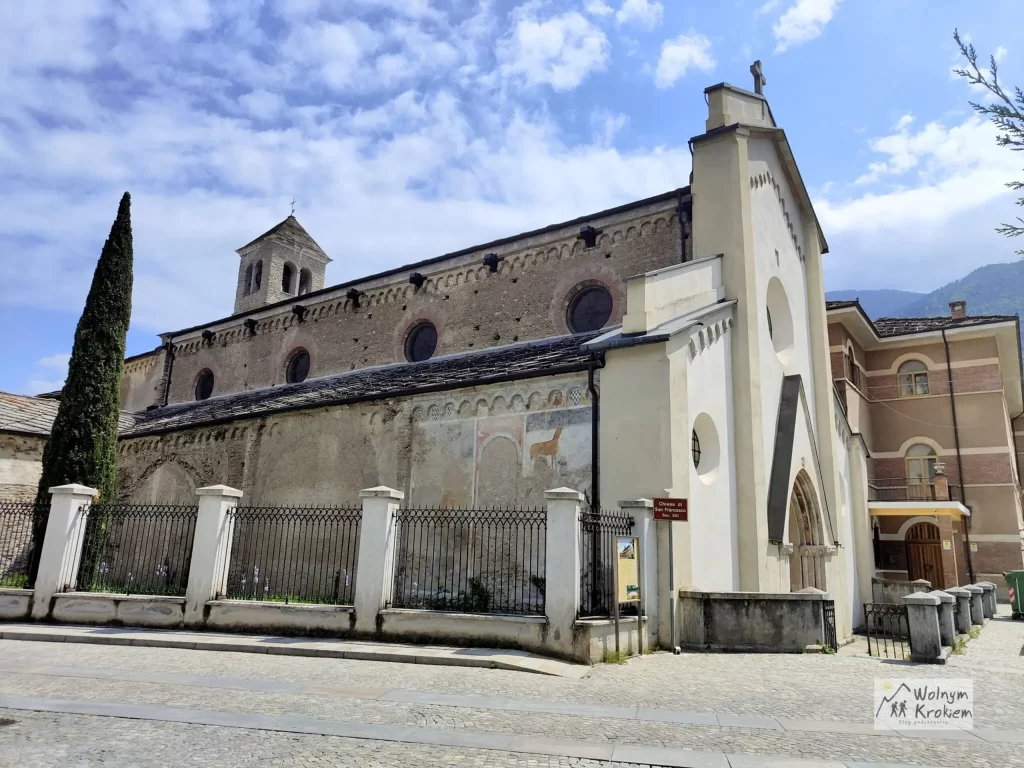
Summary of the trip from Turin to Susa
For us, the trip to Susa was the best part of our three-day trip to Turin. Possibly a big influence was the fact that we don’t like being in crowds too much and definitely enjoy the view of the mountains more than the city buildings. Certainly Leoś enjoyed the sightseeing more because not only could he take the train, but he also had much more freedom of movement and options to explore the town.
Maybe the next time we fly to Turin, we will just stay overnight in a mountain town like this and hike in the mountains?
As always, at the end of the post we give you some useful information about Susa and an interactive map with our suggested city trail, allowing you to explore the main attractions of Italian Susa.
Susa can be reached by train starting from Turin Central Station. The cost of a ticket is €5.50 one way for an adult. Children under 4 years of age ride for free and do not need zero tickets (like in Poland). The train takes approximately one hour.
Return trains leave Susa every hour and, in our case, departures were at 4.09 p.m. / 5.09 p.m. / 6.09 p.m. You can find a detailed schedule on the carrier’s website Trenitalia.com. Also check Google Maps, which has the timetable for the proposed route. You can buy your return ticket at the ticket machine located at the main entrance of the railway station in Susa.
Susa is a small town located in the midst of the Alps. It has a very rich history and was once the capital of a province, which is why it is characterised by its many interesting buildings.
While in Susa, visit the town’s main attractions and take a walk along the historic town path. You can get a paper map for free at the tourist information centre.
If you want you can check our complete plan for you to visit Turin in 3 days.
